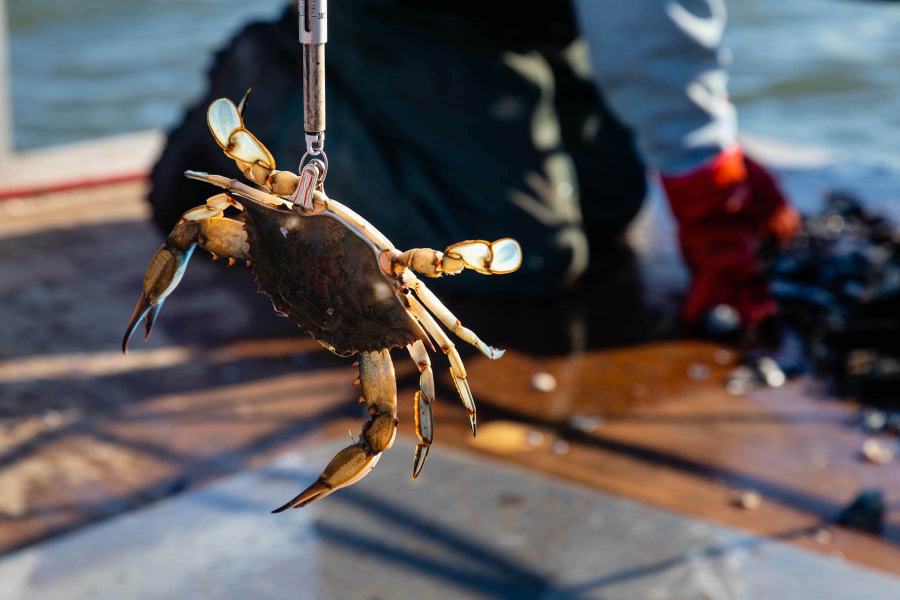Harvest management continues as blue crab population reaches a 33-year low

Every year, the Chesapeake Bay Stock Assessment Committee—a working group of the Chesapeake Bay Program’s Sustainable Fisheries Goal Implementation Team—releases a Blue Crab Advisory Report. The 2022 Blue Crab Advisory Report includes analysis of the data about the Chesapeake’s blue crab population, as well as recommendations for the jurisdictions that manage blue crabs to consider as they evaluate future regulations.
The Blue Crab Advisory Report builds on data collected in the Blue Crab Winter Dredge Survey, including information from the previous year’s harvest, and adds expert scientific analysis by members of the Chesapeake Bay Stock Assessment Committee.
This year’s Blue Crab Winter Dredge Survey, which is conducted annually by the Maryland Department of Natural Resources and the Virginia Institute of Marine Science, brought bad news: The Chesapeake Bay’s blue crab population dropped for the third year in a row. The number of blue crabs—227 million—is the lowest recorded since the Winter Dredge Survey started 33 years ago. While juvenile abundance—the number of young crabs that will enter the fishery this year—increased slightly, the number was still the second lowest in Winter Dredge Survey history.
The blue crab population is naturally quite variable; they are not expected to stay the same from year to year. So the three jurisdictions that set regulations for blue crab harvest in the Chesapeake Bay—the Maryland Department of Natural Resources, Virginia Marine Resource Commission and Potomac River Fisheries Commission—determine those harvest guidelines by using “targets” and “thresholds.” Targets are the ideal level; thresholds are like the red warning lights on a car’s dashboard that say action needs to be taken.
In 2022, 97 million adult female blue crabs were estimated to be present in the Chesapeake Bay. This estimate is below the target of 196 million adult females, but above the threshold of 72.5 million.
Analysis in the Blue Crab Advisory Report notes that although this estimate is above the threshold for the number of adult female crabs, scientists and managers are concerned because numbers for juveniles and adult males have also remained low. So scientists are looking into identifying and addressing potential causes of this continued decline.
The Report also indicates that while female crab population numbers are down, the fishing pressure on the population stayed in bounds. The percentage of female crabs removed by fishing in 2021 was estimated at 26%, which is target (28%) and the threshold (37%) for the 14th consecutive year.
Water temperature, low oxygen levels in the Bay, the availability of healthy habitat, disease, predation and other factors can all affect the blue crab population. To focus on the question of “what’s causing the blue crab numbers to decline,” the Chesapeake Bay Stock Assessment Committee is planning a workshop to bring together expert blue crab scientists early this fall.

Comments
There are no comments.
Thank you!
Your comment has been received. Before it can be published, the comment will be reviewed by our team to ensure it adheres with our rules of engagement.
Back to recent stories